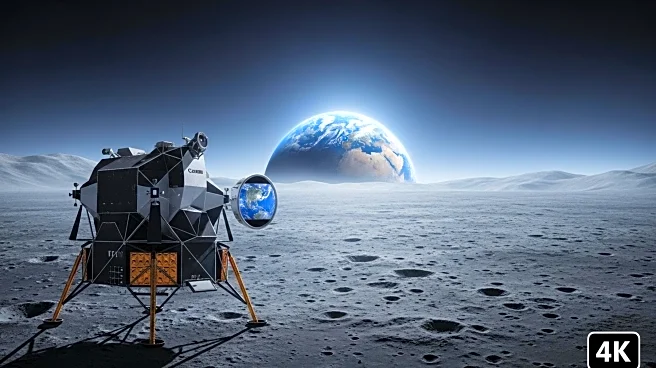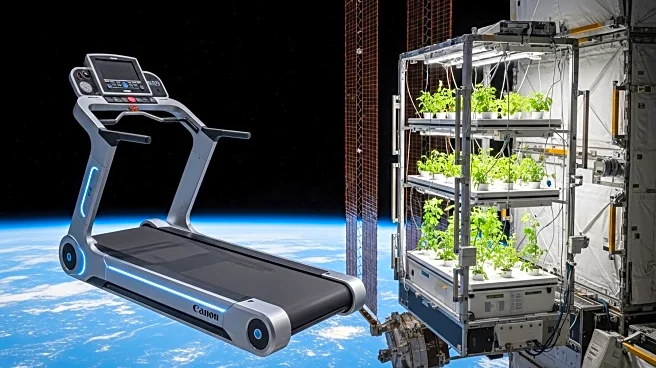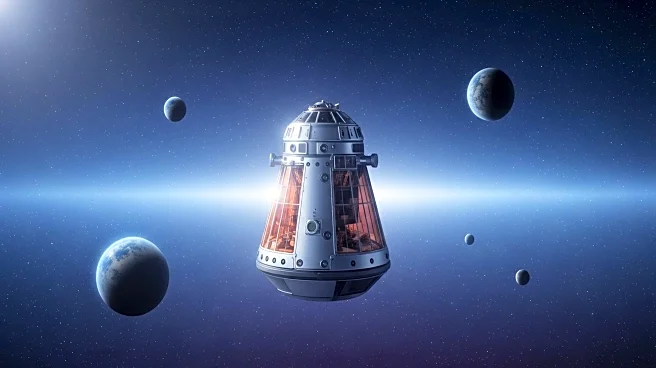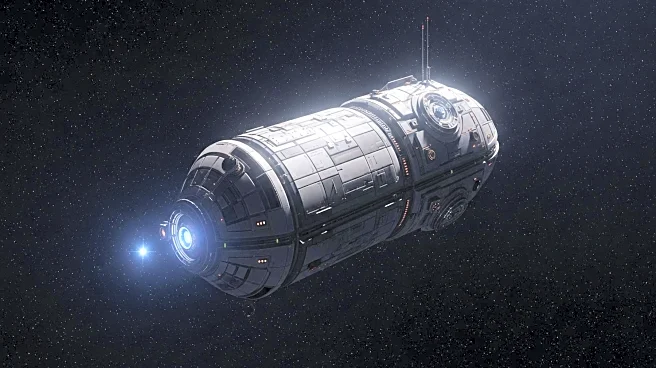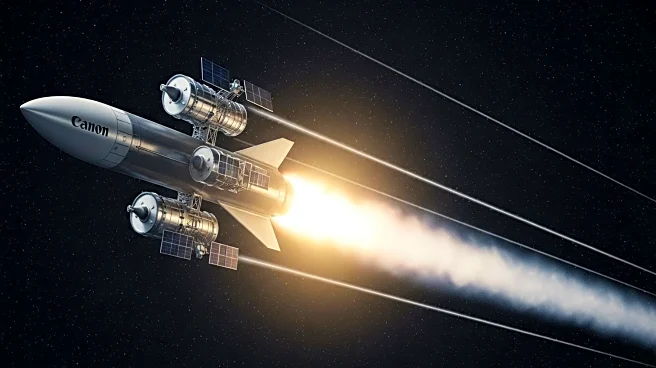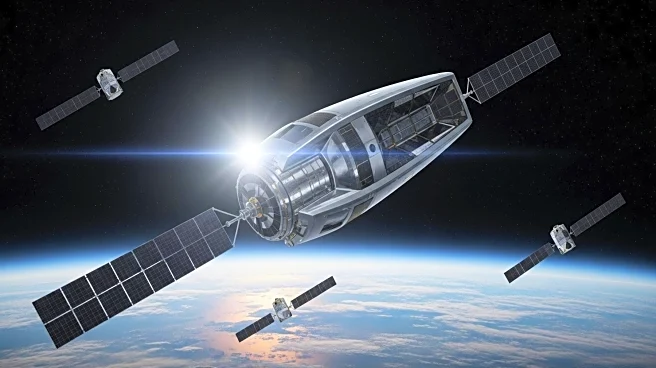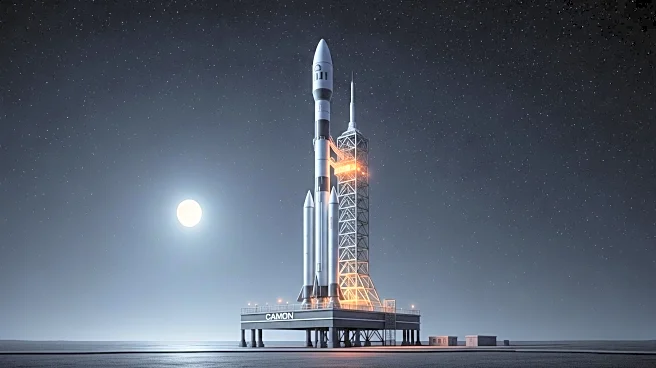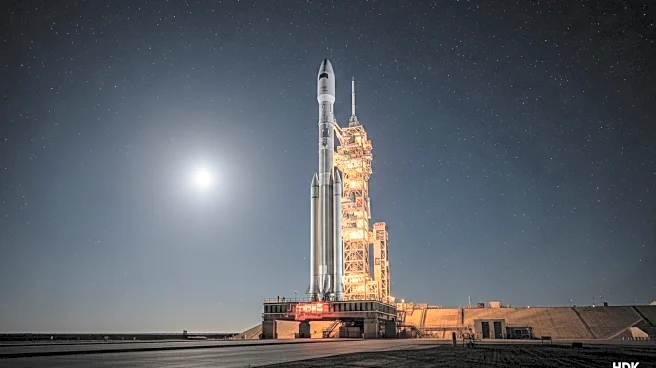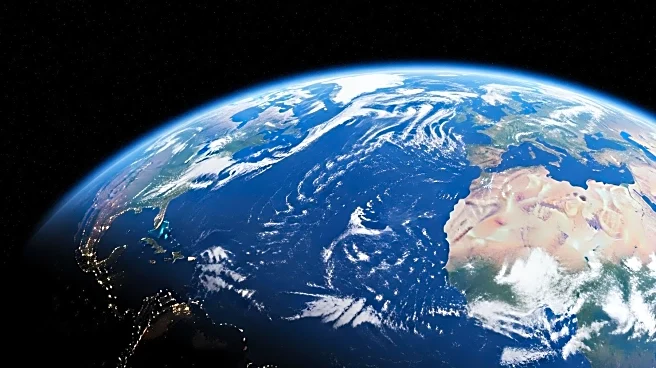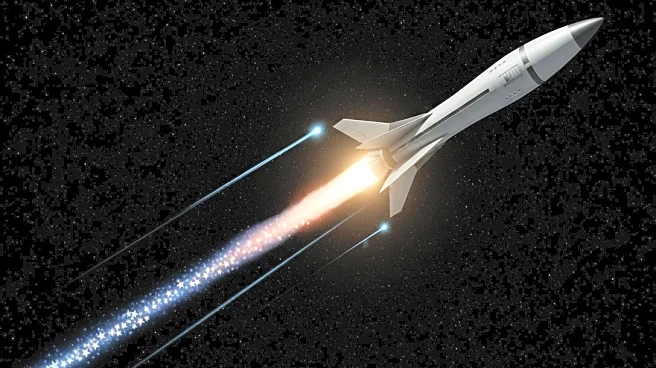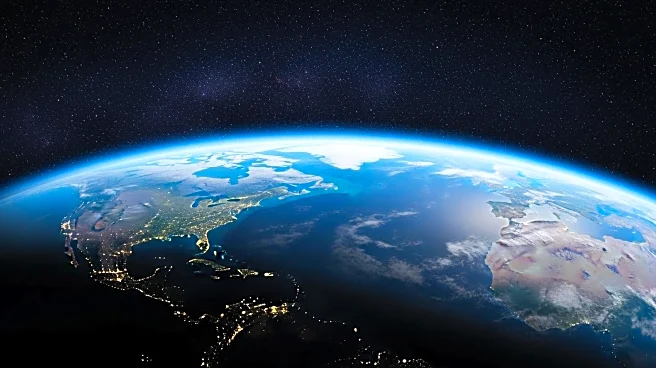What is the story about?
What's Happening?
On August 23, 1966, NASA's Lunar Orbiter 1 captured the first-ever image of Earth from the vicinity of the moon. This historic photograph, showing Earth as a crescent above the lunar horizon, was transmitted to a tracking station in Madrid. The image was taken during the spacecraft's 16th orbit around the moon, moments before it passed into the darkness of the moon's far side. Lunar Orbiter 1 was launched on August 10, 1966, from Cape Canaveral, Florida, and entered lunar orbit four days later. Its mission was primarily cartographic, aimed at photographing potential landing sites for future NASA missions, including Surveyor and Apollo. The camera system, developed by Eastman Kodak, was originally designed for Cold War-era spy satellites and featured an automated system for developing and transmitting images.
Why It's Important?
The capture of Earth's image from the moon by Lunar Orbiter 1 was a significant milestone in space exploration, providing a new perspective on our planet and advancing the capabilities of space photography. This achievement laid the groundwork for future lunar missions, including the Apollo program, by identifying potential landing sites. The image also marked a cultural shift, influencing public perception of Earth and space exploration. It demonstrated the technological prowess of the United States during the space race, showcasing advancements in satellite imaging and remote sensing. The photograph's impact extended beyond scientific circles, contributing to the growing interest in space and the environment.
What's Next?
Following the success of Lunar Orbiter 1, NASA continued to develop more advanced spacecraft and imaging technologies, leading to the iconic 'Earthrise' photo taken by Apollo 8 in 1968. This progression in space photography has paved the way for modern missions, such as those conducted by the James Webb Space Telescope, which continue to explore the universe with unprecedented detail. The legacy of Lunar Orbiter 1's mission underscores the importance of technological innovation in expanding our understanding of space and Earth's place within it.
Beyond the Headlines
The image captured by Lunar Orbiter 1 not only served scientific purposes but also had profound cultural implications. It offered a new perspective on Earth, highlighting its fragility and uniqueness in the vastness of space. This view has inspired environmental movements and a greater appreciation for planetary conservation. The photograph's historical significance continues to resonate, reminding humanity of the interconnectedness of all life on Earth and the importance of preserving our planet for future generations.
AI Generated Content
Do you find this article useful?
